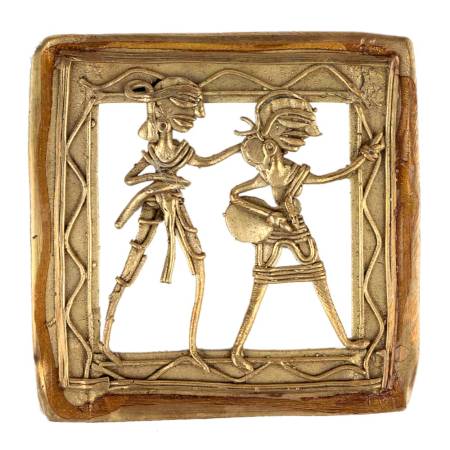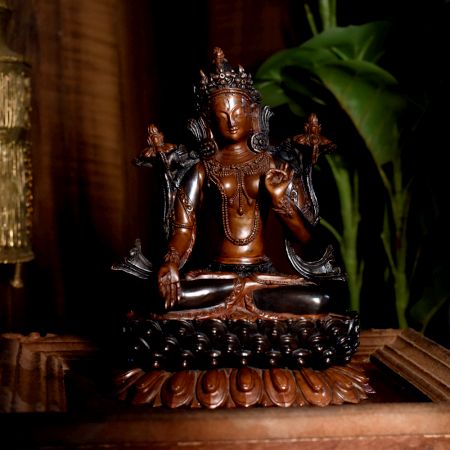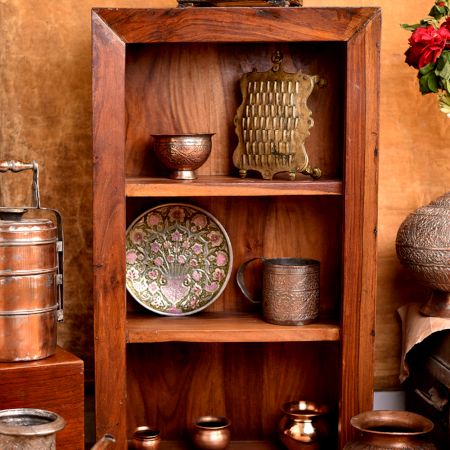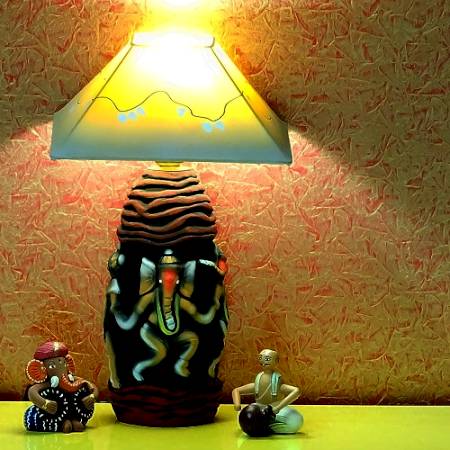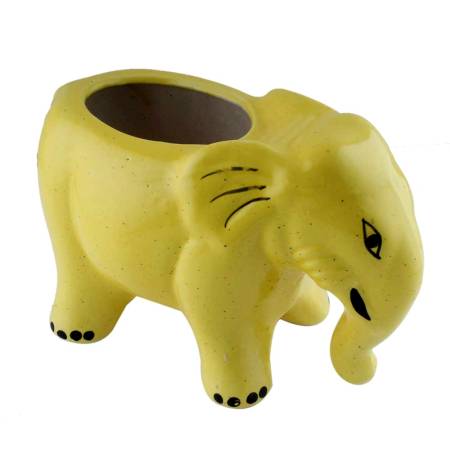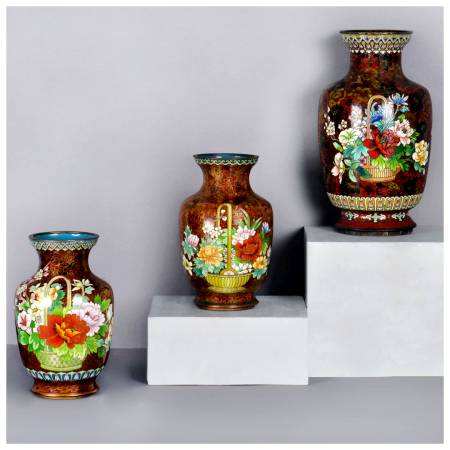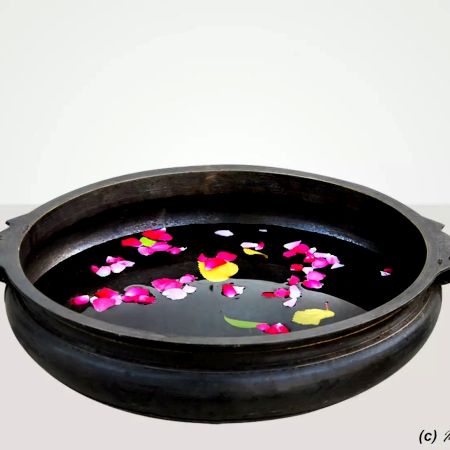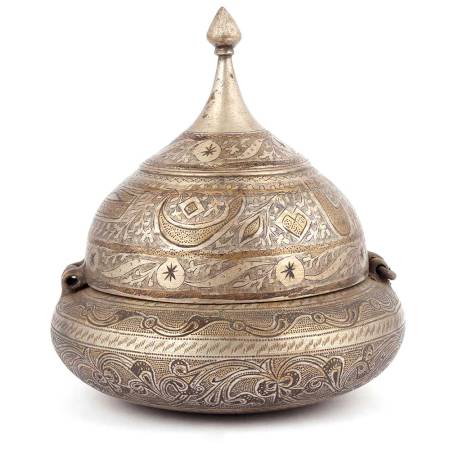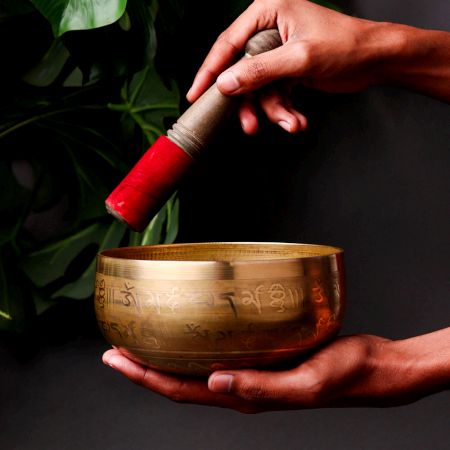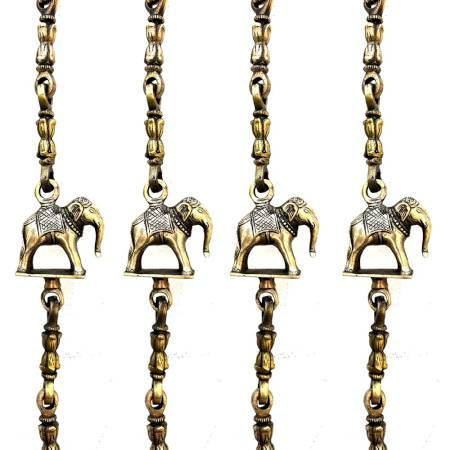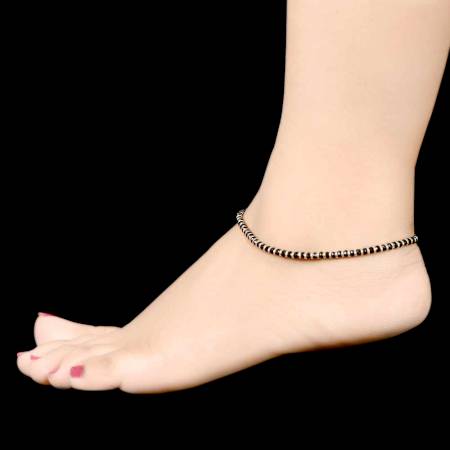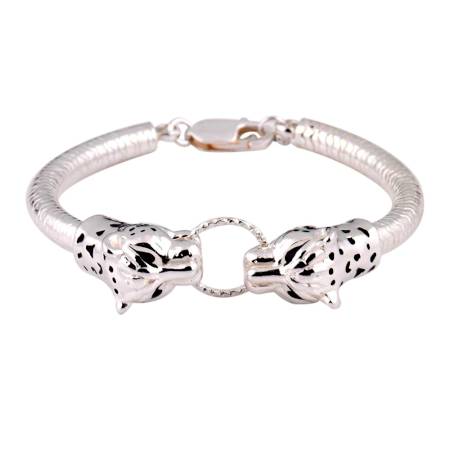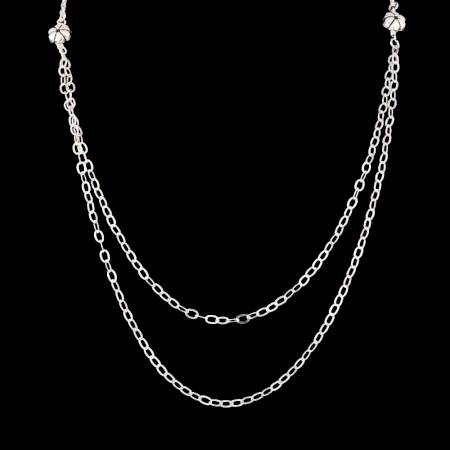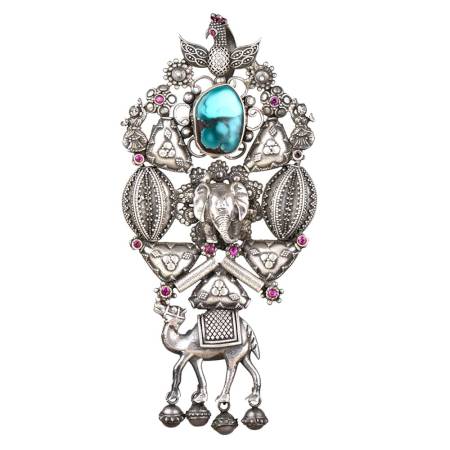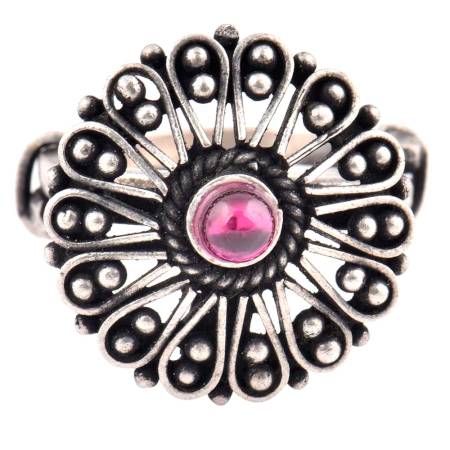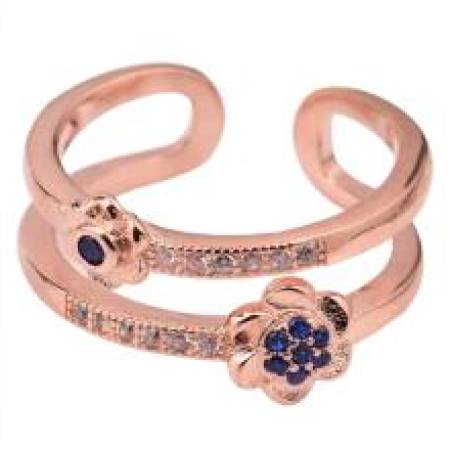-
Boho Labradorite Silver Ring 925 Sterling Silver Handmade Gemstone Jewelry
- ₹ 3,440.00
-
Only a few left
-
Blue Copper Turquoise Cabochon 925 Sterling Silver Ring Handmade Boho Jewelry
- ₹ 3,440.00
-
Only a few left
-
Handmade Black Onyx Ring 925 Sterling Silver Boho Gemstone Jewelry for Women
- ₹ 3,270.00
-
Only a few left
-
Blue Copper Turquoise Moon 925 Sterling Silver Ring Handmade Boho Jewelry
- ₹ 3,270.00
-
Only a few left
-
Handmade 925 Sterling Silver Labradorite Ring Crescent Moon Design for Women
- ₹ 3,270.00
-
Only a few left
-
Dainty Amethyst Crescent Moon Ring 925 Sterling Silver Handmade For Women
- ₹ 3,100.00
-
Only a few left
Premium Silver Rings – Shop Latest Designs at Best Prices
Introduction to Silver Rings
A silver ring carries a certain quiet charm. It reflects light, memory and identity. People choose it for its cool sheen, its subtle elegance and its ability to suit every mood. It travels from festive halls to everyday routines without demanding attention. Over generations, artisans shaped it into heirlooms, love-tokens and symbols of belonging. Its roots stretch from ancient trade routes to modern studios, shaping styles across continents. Whether worn for self-expression or sentiment, it feels familiar yet personal. It adapts to changing fashion while keeping its essence intact, giving it a place that neither fades nor feels excessive.
What Is A Silver Ring?
A silver ring is a band formed from precious metal known for its soft glow and flexible character. It sits on the hand as ornament, signature, or talisman. The metal’s natural brightness makes detailing easier, allowing jewellers to explore fluid, geometric or sculpted forms. Across centuries, it moved through courts, temples and households, becoming part of attire and identity. In daily use, it complements varied skin tones and pairs effortlessly with other metals, especially gold or platinum, creating layered aesthetics. On the cultural side, such rings marked promises, achievements and personal milestones. Modern wearers choose them for their balance of cost, elegance and meaning. Lightweight, adaptable and expressive, it is crafted in many forms, from smooth bands to textured pieces. Its greatest appeal lies in simplicity: a silver ring is straightforward to wear yet visually striking, making it an enduring favourite in contemporary jewellery.
Why Are Silver Rings Considered Timeless Pieces Of Jewellery?
Silver rings remain relevant because they align with changing eras without losing identity. In ancient rituals, they signified bonds and stature. In medieval courts, they were valued for rarity. In today’s world, they thrive through versatility and universal appeal. The metal’s colour merges with every fashion cycle, from minimal aesthetics to bold silhouettes. It never overwhelms, making it suitable for everyday wardrobes and ceremonial attire. The cultural thread also strengthens its continuity. Families pass silver jewellery from one generation to the next, turning accessories into stories. The material ages gracefully, gaining character through wear and polish. It holds emotional longevity, and emotional longevity makes any ornament timeless. A silver ring also allows creative renewal, giving designers endless room to experiment. While trends come and go, silver rings remain constant because they feel personal, adaptable and honest, surviving decades of shifting taste and identity.
Symbolism & Meaning of Silver Rings
Silver rings carry symbolism tied to reflection, clarity and inner stillness. Cultures across Asia and Europe linked the metal to lunar energy and intuitive strength. It became a medium for vows, remembrance and spiritual grounding. Its calm visual tone helps the wearer associate it with restraint, emotional harmony and awareness. Over time, lovers, ascetics and travellers wore it for reassurance or continuity. The essence of its meaning lies not in grandeur but in thoughtful presence. That is why silver rings feel aligned with introspective personalities, balancing emotional depth with elegant understatement.
What Do Silver Rings Commonly Represent Emotionally Or Spiritually?
Emotionally, silver rings often mirror sincerity, loyalty and quiet resilience. They are exchanged to honour connection without extravagance, making them favoured in intimate bonds and personal rituals. Spiritually, the metal carries associations with lunar symbolism, representing cyclical renewal, inner reflection and intuitive clarity. Many traditions believe it strengthens calm thinking and emotional grounding, especially when worn close to the pulse. Silver’s reflective surface invites metaphor, suggesting self-awareness and the ability to face one’s truth. It is seen as a companion metal, not a dominating one, and that humility gives it emotional weight. Across cultures, it appears in blessing ceremonies, protective charms and commitment tokens, cementing its role beyond ornamentation. Whether chosen for love, memory, or personal healing, the symbolism stays consistent: a silver ring becomes an anchor for intentions and emotions, turning a simple accessory into a small, constant reminder of meaning.
Why Is Silver Associated With Purity, Balance, And Calmness?
Silver gained this reputation through its colour, mythology and healing traditions. Its pale sheen resembles moonlight, which many cultures link to clarity and steady emotion. Ancient healers believed silver carried purifying properties because of its natural antimicrobial qualities, reinforcing ideas of cleanliness and protection. Philosophically, it embodies balance by sitting between extravagant gold and industrial metals, maintaining elegance without arrogance. Its visual softness encourages calm association, unlike harsher materials that signal dominance or aggression. Over centuries, poets, priests and travellers used silver talismans during meditation or prayer, strengthening the symbolic thread. The result is a cultural memory where silver equals stillness, purity and emotional equilibrium. When worn as a ring, it becomes a subtle reminder of composure, helping the wearer feel centred in moments of turbulence. The symbolism survived because it aligns with human longing for peace and inner order.
Styles & Design Variations
Silver rings evolve through changing craft languages. Some designs chase bold form, while others preserve quiet refinement. Fashion cycles expanded the catalogue from flat bands to textured surfaces, sculpted motifs and celestial themes. Cultural movements also left their imprint, from tribal carvings to temple-inspired filigree. Modern wearers explore stackable bands, open rings and handcrafted pieces with organic lines. Designers experiment with patina, volume and asymmetry, shaping identities through form. These variations allow every wearer to find a version that speaks to personality, memory or mood.
What Are The Most Popular Styles In Silver Rings?
Popular styles often rise from a blend of tradition and contemporary minimalism. Classic bands remain ever-present because they adapt to every age group and wardrobe. Filigree and engraved motifs appeal to those who value heritage and intricate craft. Modern fashion embraces stackable bands, geometric silhouettes and adjustable open designs that offer playful layering. Nature-inspired forms, especially leaves, waves and florals, continue to attract buyers who resonate with organic storytelling. Signet rings returned as a cultural favourite, symbolising identity and legacy. On the glamorous side, cocktail designs attract attention through scale and sparkle. Meanwhile, temple and tribal patterns thrive among buyers seeking cultural depth. Across all styles, comfort, symbolism and personal fit guide preference. This spectrum keeps silver jewellery relevant, allowing wearers to move between elegance, nostalgia, bold presence and subtle charm within a single metal tradition.
How Do Gemstones Add Character To Silver Rings?
Gemstones transform silver rings by adding colour, emotion and narrative. Silver’s neutral tone acts like calm water, allowing stones to shine without competition. A deep blue lapis creates royal gravity. A green onyx brings earthy steadiness. A red garnet adds warmth and intensity. Each stone shapes personality, helping the wearer express sentiment, memory or belief. Historically, royals and sages used gemstone silver rings as protective talismans or status markers. In modern styling, gemstones introduce contrast, depth and focal interest, turning simple rings into expressive statements. The pairing is also practical, as silver enhances coloured stones more naturally than yellow metals. Whether chosen for birth symbolism, spiritual meaning or pure aesthetic pleasure, gemstones elevate silver rings into artefacts of individuality. A band becomes a story, not just an accessory.
What Is The Difference Between A Statement Ring And A Minimal Band?
A statement ring emphasises presence. It is larger, more detailed, often set with motifs, stones or sculptural volume. It draws attention and becomes the focal point of a hand. Such rings usually mark occasions, moods or bold self-expression. A minimal band, in contrast, whispers rather than declares. It relies on line, proportion and clean form. It complements instead of commanding. Where statement rings create drama, minimal bands create balance. One suits celebrations, performance, or confident public styling; the other suits everyday rhythm, professional settings or introspective personalities. Both belong to the same family but serve different emotional purposes. Together, they allow a wearer to shift tone, just as music shifts from crescendo to silence.
Why Is Oxidized Silver Trending In Modern Fashion?
Oxidized silver attracts attention because it offers mood, character and depth. Its darker tones break away from polished perfection, embracing a weathered, artistic identity. As modern fashion leans toward individuality, the raw appeal of oxidized metal resonates with people who prefer soulful textures over glossy uniformity. It pairs well with Indo-boho aesthetics, tribal patterns, gothic silhouettes and heritage craft, making it popular in urban India and global streetwear alike. The finish highlights engraved patterns and creates cinematic contrast, giving rings a lived-in charm, almost like artefacts with memory. Unlike high-mirror jewellery that suggests luxury, oxidized silver suggests story. This emotional difference fuels its rise. It allows styling that feels personal, earthy and unfiltered, matching contemporary taste for authenticity.
Materials & Silver Purity
Purity determines character, durability and cost of silver rings. High-purity forms give richer shine but remain soft, while alloyed variants offer strength. Jewellery traditions across the world embraced specific grades for different purposes, from ceremonial heirlooms to daily-use bands. Each category responds differently to polish, texture and ageing. Understanding purity helps buyers choose pieces that match lifestyle, wear frequency and emotional intent.
What Types Of Silver Are Used For Rings (925, Fine Silver, Oxidized)?
Rings are usually crafted in three major silver categories. Fine silver contains extremely high purity and delivers a luminous surface, often used for artistic or ceremonial pieces, though it remains soft and prone to bending. Sterling, also known as 925, blends silver with copper to create durable alloys suited for rings that face movement, weather, and daily contact. It balances brightness with structural integrity. Oxidized variants begin as sterling and undergo a darkening process that emphasizes detail and texture. Each type invites a different wearer. Fine silver suits collectors and occasional use. Sterling suits everyday wardrobes. Oxidized silver suits artistic or expressive personalities. This variety allows jewellers to explore aesthetic diversity within a single metal tradition.
Why Is Sterling Silver (925) Preferred For Daily Wear Rings?
Sterling silver earns preference because it withstands friction, movement and environmental exposure better than higher-purity forms. The copper alloy strengthens the metal without dulling its visual identity, making it reliable for rings that accompany routine work, travel and celebration. It offers longer life, easier maintenance and comfortable weight. Its affordability also makes it accessible for style variation, helping wearers own multiple designs for different occasions. From a craft perspective, 925 responds beautifully to engraving, gemstone setting and shaping, giving artisans creative freedom. This balance of resilience, aesthetics and cost places sterling at the centre of modern ring-making. It delivers dependable shine without fragility, which is the key requirement for daily jewellery.
Craftsmanship & Making of Silver Rings
The making of a silver ring is a conversation between fire, hand and vision. Artisans melt, shape, refine and transform raw metal into intimate sculpture. Traditional workshops across India, from Jaipur to Kolkata, preserved age-old methods passed through families. Each curve, bevel and symbol represents decisions shaped by instinct and experience, giving the final piece soul and identity.
How Are Silver Rings Traditionally Crafted By Artisans?
Artisans begin by melting silver into small ingots, which are hammered or rolled into sheets and wires. These forms are cut, bent and soldered together into a base shape. Heat controls bonding, while steady hands maintain clean joins. Once the structure sets, craftsmen carve patterns, shape contours and fit gemstones where needed. The ring is then filed to remove excess metal and refined through sandpaper stages before its final polish or patina. In many heritage studios, tools remain simple: a flame, hammer, chisel and wooden block. Yet the outcome carries remarkable precision. Traditional crafting values patience, rhythm and touch. The process breathes life into metal, giving each ring slight irregularities that signal authenticity and human presence.
What Techniques Like Engraving, Polishing, And Oxidizing Are Used In Ring-Making?
Engraving etches patterns, lines or symbolic motifs into the metal, adding identity and narrative. Polishing smooths the surface through progressive abrasion until the ring gains its reflective glow. Oxidizing alters colour through controlled chemical darkening, creating dramatic relief on carvings and textures. These techniques can work individually or in sequence. Engraving adds story. Polishing adds clarity. Oxidizing adds contrast. Artisans select the order based on final intent, adjusting intensity at every stage. Together, these methods shape personality, giving a ring its voice. The craft is a blend of science, artistry and tactile intuition.
How Do Finishes (Matte, Glossy, Oxidized) Change The Final Look Of A Ring?
Finishes redefine mood. A glossy surface feels formal, radiant and pristine. It enhances stones and pairs well with ceremonial styling. A matte finish softens reflection, leaning toward contemporary and understated aesthetics. It suits everyday wear and modern wardrobes. Oxidized finishes evoke depth and vintage soul, highlighting texture and storytelling, ideal for artistic expressions. Though the base metal remains the same, finishes act like cinematic lighting, shifting tone and emotion. This is why the same design can look delicate, dramatic or minimal depending on its finish. The choice becomes part of self-expression, allowing wearers to match jewellery with personal rhythm, lifestyle and style language.
Sizing, Fit & Comfort
Silver rings are not just adornments they are extensions of personal style, comfort, and identity. Choosing the right size blends aesthetic appeal with daily practicality. Unlike fleeting fashion pieces, a well-fitted silver ring sits naturally on the finger, enhancing confidence and ease of wear. Its shape, thickness, and inner curvature subtly influence comfort over long hours. Cultural preferences, from broad bands in traditional Indian weddings to slender Western style bands, further shape how a ring interacts with the hand. Understanding these nuances ensures that silver jewelry doesn’t just look exquisite, it feels effortless, aligning with lifestyle and ceremonial customs.
How Do You Find The Right Silver Ring Size For Daily Wear?
Finding the perfect silver ring size starts with precise measurement, but it goes beyond numbers. Finger shape changes with temperature, humidity, and daily activity, so measure at room temperature, ideally at the end of the day when fingers are slightly swollen. Using a ring sizer or tracing an existing well-fitted ring ensures accuracy. For daily wear, a slightly snug fit prevents rotation but avoids constriction. Cultural practices, like stacking rings or wearing rings over knuckles during rituals, influence sizing choices. Comfort, combined with aesthetic preference, ensures the ring complements the wearer’s style without constant adjustment or friction.
Why Does Ring Thickness And Shape Affect Comfort?
Thickness dictates weight distribution and tactile feel. Broad bands hug the finger, offering a bold statement but can limit joint mobility, while thin bands allow more flexibility yet may twist or wear faster. Curved inner surfaces, comfort fit designs, reduce pressure and friction, enhancing prolonged wear. Shapes like domed, flat, or angular bands also interact differently with neighboring fingers, influencing both style and practicality. Cultural symbolism often favors certain thicknesses, as in ornate Indian or Middle Eastern designs. Understanding this balance allows a wearer to choose rings that marry visual impact with ergonomic ease, ensuring beauty doesn’t compromise daily functionality.
Buying & Authenticity
The world of silver jewelry is layered with craftsmanship, regional artistry, and commercial variation. Authenticity is central, especially in markets abundant with alloys, silver plated options, and counterfeits. Beyond the material, cultural reverence for silver in ceremonies, gifting, and investment heightens the need for verified sources. A ring’s design, hallmarking, and provenance tell stories of artisanship and history. Selecting a seller with certified offerings ensures quality, longevity, and ethical sourcing, while also safeguarding emotional and financial investment. Whether purchased online, at boutique stores, or traditional markets, awareness and discernment define a confident silver acquisition experience.
Where Can You Buy Authentic Silver Rings?
Authentic silver rings are available from specialized jewelers, certified online retailers, and traditional artisan markets. Established stores offer verified hallmarks, purity documentation, and craftsmanship assurances. Online platforms with certified seller badges and customer reviews provide convenience but require diligence to avoid counterfeits. Cultural bazaars and artisan fairs present unique handcrafted designs, often reflecting regional motifs and techniques, yet buyers must confirm authenticity. Trusted certifications, clear return policies, and hallmark visibility guide buyers toward genuine pieces. Prioritizing verified sources ensures the silver’s purity, durability, and long-term value, transforming the acquisition from a mere purchase into a culturally resonant investment.
How Do You Identify Real Silver Using Hallmarks And Purity Stamps?
Hallmarks and purity stamps are silent proofs of authenticity. A “925” stamp signifies sterling silver, denoting 92.5% purity. Additional symbols may indicate country of origin, assay office, or maker’s mark. Familiarity with common marks, lion passant in UK silver, numbers in Indian jewelry, helps differentiate genuine silver from plated or alloyed alternatives. Beyond stamps, color, weight, and subtle oxidation patterns reveal material integrity. Cultural traditions often dictate hallmark styles, with regional artistry encoded into tiny motifs. Recognizing these markers ensures informed purchases, preserving value, avoiding fraudulent items, and maintaining the integrity of rings that carry both aesthetic and symbolic significance.
Why Should You Prefer Certified Sellers For Silver Rings?
Certified sellers provide transparency, documentation, and reassurance. They authenticate purity, offer warranties, and reduce the risk of counterfeits, especially important for high value or limited edition rings. Cultural gifting practices, like weddings or milestone celebrations, intensify the need for verified authenticity. Certified sellers often ensure ethical sourcing and consistent craftsmanship, protecting both personal investment and cultural heritage. Trustworthy transactions prevent financial loss and maintain confidence in the jewelry’s longevity. With certified sellers, buyers gain knowledge about design, origin, and care practices, transforming a simple purchase into a curated experience that respects the artistry, history, and practical demands of silver jewelry.
Investment & Value
Silver rings bridge aesthetics and economic value. While fashion changes, silver retains intrinsic worth due to its metal purity, scarcity, and artisanal legacy. Collectors and enthusiasts value rings not only for adornment but also as long-term assets. Handcrafted and limited edition designs, often reflecting regional or cultural motifs, command higher prices due to rarity, technique, and artistic narrative. Understanding market trends, metal fluctuations, and provenance allows buyers to approach silver rings as both cherished keepsakes and financial instruments. The cultural symbolism embedded in designs enhances emotional and historical value, reinforcing why silver remains a timeless investment choice across regions and traditions.
Are Silver Rings A Good Long-Term Investment?
Silver rings offer tangible and emotional investment potential. Metal value, market trends, and craftsmanship determine long-term appreciation. Unlike mass-produced items, handcrafted or limited editions retain or increase value over decades. Cultural significance in gifting and ceremonial use enhances desirability, particularly in regions where silver represents prosperity, purity, or heritage. Proper care, avoiding tarnish, physical damage, and unethical resale channels, preserves both monetary and aesthetic worth. While silver may not match gold in price volatility, its accessibility and collectibility make it appealing for gradual asset accumulation. Investing in authenticated, high quality pieces ensures enjoyment today while safeguarding future value.
Why Do Handcrafted And Limited Edition Rings Hold Higher Value?
Artisan rings encapsulate skill, time, and narrative. Each handcrafted detail, engraving, texture, or casting nuance, cannot be replicated industrially, creating uniqueness that collectors prize. Limited edition rings, by scarcity, elevate market demand, linking ownership to exclusivity. Cultural heritage often enhances value, with designs reflecting regional motifs, religious symbolism, or ceremonial significance. These pieces carry both aesthetic and historical resonance, making them more than jewelry, they are stories and status markers. From a practical viewpoint, rarity and craftsmanship enhance durability and collectibility. Buyers are drawn not just to silver content but to tangible narratives, artistry, and a piece’s place in cultural memory.
Care, Cleaning & Maintenance
Silver’s elegance is intertwined with attentive care. Exposure to air, moisture, and chemicals leads to tarnish, dullness, or scratches. Regular maintenance preserves shine and symbolic significance. Cleaning techniques range from gentle polishes to traditional household methods, each respecting metal integrity. Storage, too, matters: soft pouches, anti tarnish cloths, and individual compartments prevent abrasion. Understanding these principles ensures silver rings remain vibrant across generations, retaining both visual allure and cultural value. Proper handling aligns with broader traditions of gifting, daily wear, and ceremonial preservation, reinforcing the metal’s status as a cherished adornment and asset.
How Do You Clean A Silver Ring To Prevent Tarnish?
Preventing tarnish begins with routine cleaning using gentle, non abrasive methods. Mild soaps or dedicated silver cleaners remove oils, dirt, and pollutants that accelerate oxidation. Household alternatives like baking soda pastes or vinegar solutions offer natural options, but must be used cautiously to avoid damage. Drying thoroughly with soft cloths ensures moisture doesn’t linger. Daily habits, such as removing rings before cooking, swimming, or applying lotions, reduce chemical exposure. Cultural practices, like polishing before ceremonies, integrate functional care with ritual aesthetics. Regular, mindful maintenance preserves both shine and symbolism, extending the ring’s life while respecting its handcrafted integrity.
What Storage Methods Protect Silver From Moisture And Scratches?
Storage safeguards both finish and form. Anti tarnish pouches, sealed compartments, and soft cloth wrappings reduce exposure to air, moisture, and friction. Individual compartments prevent rings from rubbing against each other or harder metals, preserving intricate designs and polish. Silica packets or desiccants in storage boxes absorb humidity, slowing oxidation. Cultural practices often encourage storage separate from daily jewelry, aligning with ceremonial customs and preserving ritual significance. Light, heat, and chemical avoidance further protect rings. By combining practical methods with cultural awareness, silver maintains brilliance and structural integrity, ensuring that each piece endures as both aesthetic and emotional investment.
Can Tarnished Silver Rings Be Restored To Their Original Shine?
Tarnished silver can often be revived to its initial luster. Polishing with non abrasive cloths or chemical free solutions removes oxidation while maintaining metal integrity. Gentle immersion in specialized silver baths or homemade solutions restores brightness without harming details. Deep tarnish may require professional attention, particularly for rings with intricate engravings or inlaid stones. Restoration honors both aesthetic and symbolic significance, reflecting cultural respect for longevity and care. With proper maintenance, recurring tarnish is minimized, preserving visual appeal and structural health. A restored silver ring is more than renewed metal, it reconnects the wearer with tradition, artistry, and personal expression.
Durability & Common Issues
Silver rings combine artistry and endurance, yet their lifespan depends on material handling, environment, and design complexity. Daily wear exposes rings to moisture, skin oils, chemicals, and friction. These elements gradually alter appearance, causing tarnish, scratches, and loosening of stones. Different silver alloys, plating, and finishes respond uniquely to these conditions, making informed selection essential. Understanding these patterns ensures rings retain both aesthetic charm and functional reliability. Cultural traditions often favor preserving rings across generations, embedding care practices into rituals. A well-chosen and cared-for silver ring can endure decades, becoming a tangible link between heritage, style, and everyday wear.
What Causes Silver Rings To Tarnish Over Time?
Tarnish occurs when silver reacts with sulfur compounds in the air, skin, or household chemicals. Even minor contact with perspiration, lotions, perfumes, or cleaning agents accelerates oxidation, creating a gray or black layer. Environmental factors like humidity, pollution, and proximity to certain metals intensify the reaction. Cultural and ceremonial use can influence exposure; rings worn during cooking, festivals, or rituals often accumulate residues that promote tarnish. The type of silver alloy also affects speed of discoloration, with sterling silver generally more resistant than pure silver. Understanding these causes allows practical prevention, ensuring the ring maintains its visual and emotional significance while preserving long-term value.
How Can You Prevent Scratches, Loose Stones, And Surface Damage?
Prevention begins with mindful daily practices. Remove rings during heavy physical work, cooking, or contact with harsh surfaces. Store them separately in soft pouches or compartments to avoid friction and scratches. Regular inspection ensures prongs, settings, and clasps remain secure, preventing stone loss. Polishing with non-abrasive cloths maintains shine while removing minor debris. Cultural rituals, like polishing before festivals or gifting, align maintenance with emotional significance. Choosing rings with durable alloys or comfort-fit designs reduces strain on settings. Preventive care ensures the piece remains both visually striking and structurally sound, preserving functionality and sentimental value over years of wear.
Styling & Fashion Pairing
Silver rings are versatile style anchors, bridging ethnic heritage and contemporary fashion. Their neutral sheen complements vibrant traditional fabrics, muted everyday attire, and formal ensembles alike. Shapes, finishes, and embellishments dictate mood—from minimalist elegance to statement drama. Layering multiple rings creates visual texture, expressing personality while maintaining coherence. Jewelry styling often draws on cultural influences; stacking rings, pairing with bracelets, or matching motifs with attire enhances the ensemble. Thoughtful selection transforms silver rings from mere accessories into curated style statements. The interplay of material, design, and context allows rings to express individuality, bridging everyday practicality with ceremonial and fashion significance.
How Do Silver Rings Complement Ethnic, Casual, And Formal Outfits?
Silver’s adaptability makes it a bridge across wardrobes. In ethnic attire, intricate patterns echo traditional motifs, enhancing ritual or festival ensembles. For casual wear, slender bands or minimalist designs add subtle sophistication without overwhelming the outfit. Formal settings favor polished finishes, geometric designs, or gemstone accents, adding elegance and refinement. Cultural symbolism influences choices: rings may align with rituals, social customs, or personal statements. Paired with other metals or muted tones, silver balances visual weight and enhances harmony. Thoughtful styling ensures the ring complements rather than competes, creating an integrated look that resonates across settings, occasions, and aesthetic preferences.
How Can Wearing Multiple Silver Rings Create A Layered Fashion Look?
Layered silver rings evoke personality, mood, and creative expression. Combining textures, finishes, and widths creates depth, while varying finger placement and spacing introduces rhythm and asymmetry. Cultural practices, like stacking rings on specific fingers for ceremonies, can inspire contemporary styling. Rings with symbolic motifs—floral, geometric, or historical—add storytelling layers. Even minimal designs gain narrative weight when paired thoughtfully, balancing bold and delicate elements. Layering respects proportion, ensuring comfort and coherence, and allows experimentation without compromising function. Strategically combined, multiple rings transform simple outfits into curated fashion statements, reflecting both style sensibility and personal narrative.
What Type Of Silver Ring Suits Everyday Minimal Wear?
For minimal everyday wear, comfort-fit bands, thin profiles, and simple designs are ideal. They reduce friction, avoid finger strain, and remain unobtrusive across activities. Matte or polished finishes resist minor scratches, while secure settings prevent stone loosening. Minimal rings complement varied attire, from casual jeans to office wear, offering understated elegance. Cultural influences may favor thin bands or rings without heavy ornamentation for routine rituals or modest aesthetics. Functionality aligns with design: lightweight, ergonomic rings allow prolonged wear while maintaining style. This approach ensures that a silver ring becomes a subtle yet consistent expression of taste, lifestyle, and personal identity.
Gifting & Emotional Value
Silver rings are more than adornments; they are tangible expressions of connection. Their cultural and personal significance renders them meaningful for anniversaries, festivals, or rites of passage. Carefully chosen, they symbolize love, respect, and enduring memories. Heirloom rings carry familial narratives, linking generations through touch, story, and tradition. Emotional value enhances monetary worth, as the ring embodies sentiment alongside artistry. Ritualistic and gifting practices in various cultures reinforce the importance of selection, care, and presentation. A silver ring thus bridges functional elegance with personal resonance, turning everyday jewelry into a legacy of memory, affection, and aesthetic pleasure.
Why Are Silver Rings Considered Meaningful Gifts For Special Occasions?
Silver rings signify care, permanence, and emotional connection. Gifting marks milestones like birthdays, engagements, anniversaries, or cultural ceremonies. The metal’s durability and adaptability convey a sense of longevity, while intricate designs add uniqueness. Cultural practices often associate silver with prosperity, purity, or spiritual protection, amplifying the symbolic meaning. Thoughtful choice—matching style, occasion, and personal preference—transforms the ring into a statement of affection and respect. Unlike fleeting trends, silver carries intrinsic and aesthetic value, making the gift tangible, lasting, and versatile. Its presence resonates daily, acting as a visual and emotional reminder of shared moments and intentions.
What Emotional Value Do Heirloom Silver Rings Carry In Families?
Heirloom rings embody narratives of lineage, tradition, and memory. Passed down across generations, they preserve craftsmanship, stories, and cultural rituals. Each scratch, polish, and patina becomes a chronicle of family history. Emotional weight deepens through occasions marked by the ring—weddings, births, festivals. Cultural significance may further anchor the ring in rites or symbolic gestures, amplifying attachment. Ownership fosters identity, continuity, and connection to ancestors, blending material, aesthetic, and sentimental worth. Heirlooms are more than possessions; they are vessels of emotion, memory, and heritage, carrying tangible history while fostering ongoing familial and cultural bonds.
Cultural & Historical Relevance
Silver rings have traversed eras and continents, serving functional, symbolic, and decorative roles. Ancient civilizations used silver for ritualistic, ceremonial, and trade purposes. Regional craftsmanship reflected societal status, beliefs, and aesthetics. Across time, silver jewelry merged utility with artistry, from engraved signet rings to ornate ceremonial bands. Cultural storytelling, rituals, and status signaling have been encoded in design and technique. Understanding this heritage enriches appreciation of modern pieces, linking craftsmanship to social, historical, and aesthetic narratives. Silver rings are therefore not just jewelry but embodiments of civilization, tradition, and evolving human expression.
How Have Silver Rings Been Used Across Different Cultures And Eras?
Silver rings appear in cultures worldwide, from ancient Egyptian amulets to Mughal ceremonial bands, reflecting social, spiritual, and aesthetic priorities. Signet rings in Europe served as identity markers, while in India and the Middle East, rings symbolized marital status, spiritual protection, or social rank. Designs incorporated motifs, inscriptions, and gemstones aligned with regional beliefs. Beyond aesthetics, they functioned as currency, talismans, or ritual instruments. Through centuries, silver’s resilience, malleability, and cultural resonance ensured enduring relevance. Recognizing these historical contexts allows modern wearers to appreciate silver not merely as adornment but as a medium conveying narrative, ritual, and identity across time and geography.
Why Are Silver Rings Historically Linked To Protection, Love, And Status?
Silver has long been associated with metaphysical and social symbolism. Across civilizations, it was believed to ward off evil, promote spiritual purity, and symbolize loyalty or love. Ornate designs or inscriptions reinforced protective and emotional significance. Status and wealth were communicated through weight, craftsmanship, and gemstones. Marital or ceremonial rings reflected commitment, honor, and familial hierarchy. Cultural narratives embedded in design and ritual use enhanced meaning beyond material value. Historical continuity of silver rings as amulets, gifts, and status symbols illustrates how utility, artistry, and belief converge. Their symbolism persists today, enriching both personal expression and cultural legacy.
Trends & Modern Appeal
Silver rings have regained prominence as versatile fashion statements, bridging heritage and contemporary design. Their neutral sheen and adaptability allow pairing with casual, formal, and eclectic wardrobes, resonating with younger audiences seeking individuality. Social media trends, minimalism, and influencer styling have elevated silver as both daily accessory and collectible. Modern wearers appreciate craftsmanship, sustainability, and unique motifs, preferring pieces that carry narrative or aesthetic depth. Historical designs, like filigree or engraved patterns, are reimagined with geometric, sleek, or asymmetric styles. Silver rings today offer personal expression, subtle luxury, and cultural resonance, making them a dynamic choice for fashion-conscious buyers seeking both beauty and meaning.
What Makes Silver Rings Popular Among Young Fashion Buyers Today?
Young fashion buyers gravitate toward silver rings for their balance of affordability, style, and versatility. Silver adapts easily to streetwear, office attire, and evening ensembles, offering minimalist elegance or bold layering potential. Social media and influencer-driven trends showcase stacking, mixed metals, and unique textures, elevating silver as a creative medium. Sustainability concerns also influence choices, with buyers favoring ethically sourced metals and handcrafted artistry over mass production. Cultural narratives, from traditional motifs to contemporary symbolism, appeal to collectors seeking identity and story in adornment. Silver rings merge aesthetic flexibility with emotional connection, allowing young buyers to curate distinctive looks while honoring heritage and personal values.
How Are Modern Designers Blending Traditional Motifs With Contemporary Styling?
Designers increasingly reinterpret classical motifs with modern sensibilities. Filigree, paisley, and engraved patterns meet minimalist bands, geometric cuts, and mixed finishes. Cultural narratives, from Indian temple motifs to European heraldry, are translated into wearable, everyday pieces. Gemstone placements, asymmetry, and adjustable sizing reflect modern functional demands. Storytelling is embedded in designs, connecting wearers to ancestral artistry while embracing contemporary aesthetics. Social media platforms amplify experimental layering, encouraging personalization. The blend ensures that silver rings remain timeless yet relevant, offering pieces that honor history, cater to lifestyle, and provide stylistic versatility across occasions, bridging ceremonial elegance with urban practicality.
Spiritual & Wellness Beliefs
Silver’s association with spiritual and wellness practices spans centuries. Many traditions attribute calming, protective, and balancing energies to silver, linking it to bodily and mental harmony. Rings, worn directly on the skin, are believed to interact with energy points, enhancing health or focus. Cultural and astrological symbolism often guides design, from zodiac alignment to ceremonial significance. Beyond metaphysical aspects, silver embodies reflection, clarity, and ritual care. Choosing rings with intentionality—whether for meditation, gifting, or personal belief—integrates style with mindful living. The combination of aesthetic elegance and spiritual resonance makes silver a subtle yet meaningful conduit for wellness practices across cultures.
Why Do Some People Wear Silver For Health And Energy Balance?
Historical and cultural traditions associate silver with cooling properties, purification, and energy equilibrium. It is believed to absorb negative influences while enhancing calmness, circulation, or emotional clarity. Some practices involve wearing silver directly on the skin, where it interacts with pressure points or pulse regions, amplifying wellness effects. Ritualistic use, spanning Ayurveda, Feng Shui, and other holistic disciplines, underscores its significance. Daily wear allows subtle energy alignment, blending aesthetics with functional spirituality. Even outside formal belief systems, silver serves as a tactile reminder of mindfulness, personal balance, and protective intention. Its dual role in style and wellness ensures enduring appeal for conscious wearers seeking harmony and visual elegance.
Can Silver Rings Be Linked To Zodiac Or Birthstone Beliefs?
Silver frequently intersects with astrology, zodiac, and birthstone traditions. Certain metals are thought to enhance planetary energies, with silver connected to the moon, intuition, and emotional balance. Paired with gemstones aligned to birth months or zodiac signs, rings serve symbolic, spiritual, and ritual purposes. Cultural practices often dictate finger placement, combining physical comfort with metaphysical intention. Beyond belief, these rings carry aesthetic and narrative weight, embedding personality and identity in wearable form. Modern interpretations blend style and symbolism, allowing astrologically or birthstone aligned rings to function as daily accessories, meaningful gifts, and conversation pieces while maintaining elegance and contemporary relevance.
Frequently Asked Questions (FAQs)
Silver rings intrigue buyers with both heritage and practicality. Understanding authenticity, maintenance, wearability, and style integration ensures informed decisions. Cultural context, rituals, and personal preference influence selection, care, and styling. Combining history, aesthetics, and functionality, these frequently asked questions address practical and symbolic aspects, providing clarity for collectors, everyday wearers, and gift buyers alike. Modern consumers benefit from this layered insight, balancing emotional resonance, fashion relevance, and material value. Each question explores a facet of silver’s enduring appeal, from identification to protection, daily use, and trend alignment, highlighting both technical and cultural dimensions of silver rings.
What Defines A Genuine Silver Ring?
A genuine silver ring reflects purity, hallmarking, and craftsmanship. Sterling silver, marked as 925, indicates 92.5% pure silver, often accompanied by maker stamps or assay symbols. Visual inspection includes uniform luster, absence of plating flaking, and subtle oxidation patterns. Weight, tactile feel, and craftsmanship quality further distinguish authenticity from alloys or silver-plated alternatives. Cultural and historical references may embed additional motifs, reflecting regional artistry. Verification from certified sellers ensures both material integrity and ethical sourcing. Recognizing genuine silver safeguards financial and aesthetic value while connecting the wearer to craftsmanship, heritage, and enduring design principles that define lasting silver jewelry.
How Do You Protect Silver Jewellery From Tarnish And Moisture?
Protection begins with storage, routine cleaning, and mindful use. Rings should be kept in anti-tarnish pouches, soft cloths, or sealed compartments to minimize exposure to air, moisture, and friction. Avoiding harsh chemicals, perfumes, and prolonged contact with water reduces oxidation. Occasional polishing with non-abrasive cloths removes minor buildup, restoring shine without compromising integrity. Cultural rituals, such as pre-festival polishing, integrate maintenance with personal or ceremonial significance. Awareness of environmental factors, combined with storage and gentle cleaning, preserves both visual appeal and functional longevity. Proper care ensures silver rings remain striking, valuable, and emotionally meaningful for years of wear.
Are Silver Rings Suitable For Everyday Wear?
Silver rings are ideal for daily wear when designed with comfort, durability, and practicality in mind. Comfort-fit bands, secure settings, and appropriate thickness reduce friction and minimize strain. Daily exposure to soaps, lotions, or physical activity can cause tarnish or scratches, but proper care and mindful habits mitigate these effects. Minimalist designs or robust handcrafted pieces allow layering or solo wear without compromising style. Cultural and fashion considerations influence selection for daily use, balancing aesthetics, symbolism, and convenience. With consistent care, silver rings maintain visual elegance, structural integrity, and emotional resonance, functioning as enduring accessories that bridge lifestyle, heritage, and contemporary fashion.
Can Classic Silver Ring Designs Be Used In Modern Fashion Trends?
Classic silver rings, including engraved, filigree, or signet styles, seamlessly integrate into modern fashion. Minimalist interpretations, mixed metal pairings, and layering techniques update traditional aesthetics without erasing heritage. Cultural motifs can be reimagined in geometric or asymmetrical designs, appealing to contemporary tastes. Even everyday casual wear benefits from understated elegance offered by classic forms. Social media styling and celebrity influence showcase the versatility of silver, demonstrating that traditional designs can become statement pieces or subtle accents. Timeless motifs maintain relevance across decades, allowing wearers to honor history while expressing modern individuality, proving silver rings’ enduring intersection of heritage and trend.
